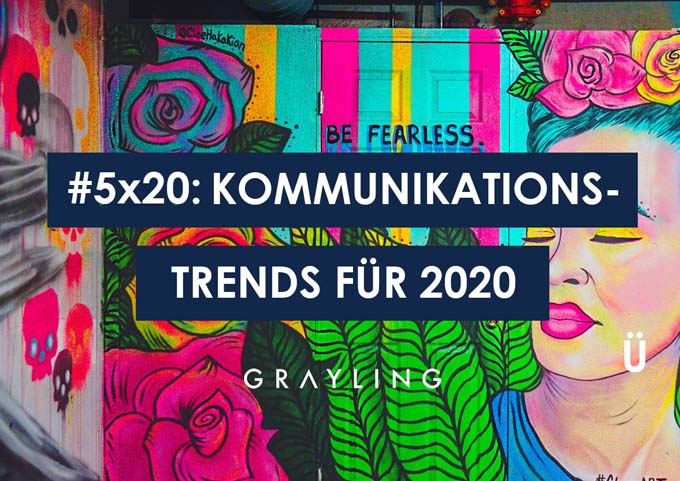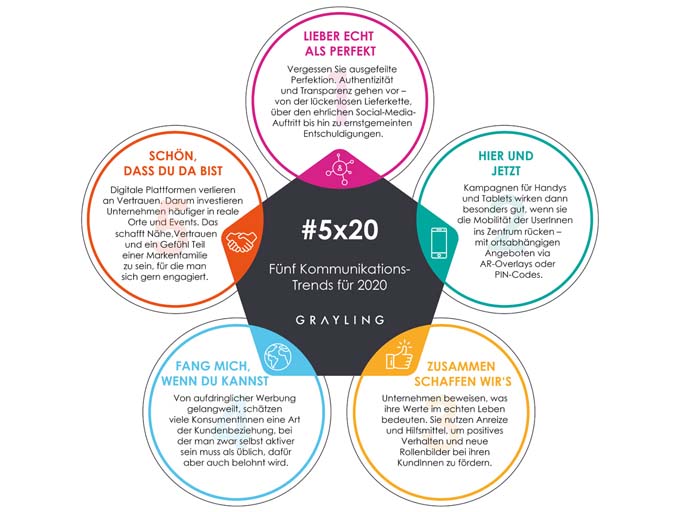#5×20: The big trend report 2020
What are the marketing and communication trends that will shape 2020? What are the new trends that will give brands, companies and organizations the decisive edge? An international team consisting of communications professionals, strategists and creatives was on the trail of these questions and identified 5 top trends.

"For the 5th year in a row since 2016, we've been keeping a very close eye on what the world's most innovative brands and companies are doing right now. We wanted to know which new tools and
techniques are being experimented with and what became of those trends we had identified in recent years," says Birte Schnellen, Managing Director Grayling Switzerland. "The majority of the successful recipes from our trend research came from companies and brands that primarily target end consumers. This is because these brands are traditionally more likely to make their communication activities public than others. However, the insights gained are also valuable for B2B communications, stakeholder engagement or the public sector," Schnellen says.
Grayling's #5×20 - the five marketing and communication trends for 2020
- Trend #1: Better real than perfect. Authenticity and credibility are more important than perfection, especially for younger target groups. Brands are responding to this: they are relying more frequently on unvarnished content, unvarnished information, and full transparency. From a fully documented supply chain to insider Instagram stories to clear admissions and credible apologies. Honesty and credibility are also increasingly important for decision-makers in politics and business.
- Trend #2: Here and now. Campaigns for mobile devices - i.e., cell phones and tablets - work particularly well when the mobile takes center stage. That is, when they provide users on the move with information that is important and interesting for their particular location. For example, location-based stories and promotions or augmented reality overlays and PIN codes. Such offers bridge the gap between the physical and the digital world and reach people everywhere and at all times. For more attention and interaction.
- Trend #3: Together we can do it. Companies demonstrate what their values mean in real life. They use their moral influence to promote positive behavior among their customers. This involves incentives and tools for changing behavior or promoting new role models in society. Brands make decisions easier. Positive behavior change is not only of interest to brands, but also to governments and public authorities: campaigns by companies can therefore also serve to attract more attention and commitment from political decision-makers.
- Trend #4: Catch me if you can. Consumers of self-aware brands often have to work harder to get messages, special offers or products. The idea of fairness is increasingly central to this. Bored of intrusive, uncharitable advertising, many consumers appreciate this new kind of customer relationship, where you have to be more active yourself than usual, but are rewarded for it. Conversely, this gives companies the chance to build real relationships.
- Trend #5: Glad you're here. Communication is becoming increasingly fragmented. Digital platforms are losing trust. That's why companies are investing more frequently in real brand experiences, i.e. in real places and events. This creates proximity and trust. The well-being of customers and stakeholders increases due to the friendly and personal atmosphere. It also creates the feeling of being part of a brand family that people are happy to be involved with.

Source: www.grayling.com









